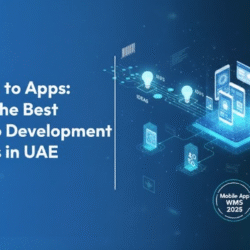Introduction
Choosing to learn full stack development is a big step, whether you’re a fresher planning your first career move, a working professional looking for a shift, or someone in Salem exploring tech opportunities. But one question almost everyone asks is simple:
“How long does it actually take to learn full stack development?”
The truth is-there isn’t a one-size-fits-all timeline. Your speed depends on your background, consistency, learning environment, and how deeply you want to master the field. Still, there is a realistic timeline that most learners follow, and that’s exactly what this guide breaks down.
If you’re considering a Full Stack Development Course in Salem, this roadmap will help you figure out where you stand, how long your journey might take, and what to expect at each stage.
Understanding What “Learning Full Stack” Really Means
Full stack development is not just about learning a few languages.
It’s the ability to work across:
-
Front-end (UI interfaces)
-
Back-end (logic + databases)
-
Version control
-
APIs & integrations
-
Deployment + cloud basics
And in 2025, companies expect developers to understand additional layers such as:
-
Microservices
-
DevOps basics
-
Modern frameworks (React, Next.js, Node.js, Django, etc.)
-
Integrating AI tools in workflows
So when we talk about “how long,” we’re talking about the time required to become job-ready-not just learning syntax.
How Long Does It Really Take? The Honest Breakdown
The timeline depends on where you’re starting. Here’s a realistic, experience-based breakdown.
1. If You’re a Complete Beginner
Timeline: 8-12 months
This is the most common category-students, non-IT professionals, job seekers, freelancers shifting into tech.
You’ll spend time learning:
-
Basics of HTML, CSS, JavaScript
-
A modern front-end framework
-
Server-side programming
-
Databases
-
Git & GitHub
-
Basic cloud deployment
-
Building 5-8 real-world projects
Beginners usually need more time to build logic, understand how systems talk to each other, and get comfortable with problem-solving.
2. If You Know the Basics of Programming
Timeline: 5-7 months
This includes learners who already understand:
-
How variables, loops, and functions work
-
Console-based programs
-
Basic syntax in any one language
These learners progress faster because they don’t need to start from absolute zero.
The biggest chunk of time goes into applying knowledge through projects.
3. If You’re Working in IT and Want to Switch to Full Stack
Timeline: 3-5 months
Professionals who already understand:
-
Databases
-
APIs
-
Software lifecycle
-
Version control
move faster. Most of the learning happens around modern frameworks and building full-stack projects from scratch.
4. The “Mastery Phase” – Optional but Valuable
Timeline: Additional 3-6 months
Even after landing a job, developers continue to grow into:
-
Scalable architectures
-
Cloud-native apps
-
CI/CD pipelines
-
Advanced API design
-
AI-powered development tools
You don’t need mastery to get hired, but you’ll definitely stand out.
What Influences Your Learning Speed?
Your timeline isn’t just about your skill level. A few practical factors play a huge role too.
1. Learning Approach
Self-learning = slower but flexible.
Structured training = faster because you follow a roadmap.
2. Hours You Can Commit
Consistent 2-3 hours daily beats studying 10 hours once a week.
3. Quality of Mentorship
A good mentor helps you avoid months of confusion.
4. Real Project Exposure
The more you build, the faster you grow.
5. Environment
Many learners in Salem prefer classroom or hybrid learning because it offers personalized guidance and accountability.
A Simple Month-By-Month Learning Roadmap
Here’s what a realistic beginner-to-job-ready timeline looks like:
Months 1-2: Foundations
-
HTML, CSS, JavaScript
-
Basic coding logic
-
Responsive design
-
Simple mini-projects
Months 3-4: Front-End Development
-
React or Angular
-
Components, props, state
-
API integration
-
2-3 front-end projects
Months 5-6: Back-End Development
-
Node.js / Django / Spring Boot
-
REST APIs
-
Database design
-
Authentication, authorization
Months 7-8: Full Stack Projects
-
Integrating front-end + back-end
-
Deployment
-
GitHub portfolio building
Months 9-10: Interview Prep
-
DSA (basic level)
-
System design fundamentals
-
Mock interviews
-
Resume + portfolio polishing
Result: You’re job-ready.
If you’re exploring training options, look for a program that offers structured guidance, real projects, and mentorship-especially if you’re studying in a growing tech city like Salem. It shortens the learning curve significantly and keeps you on track.
2025 Trends That Can Impact Learning Time
Tech learning today isn’t what it used to be. A few trends are shaping how quickly learners become employable:
1. AI-Assisted Coding
Tools like GitHub Copilot and Cursor AI help beginners write cleaner code and understand patterns faster.
2. Component-Based Development
Modern frameworks reduce boilerplate coding time.
3. Project-First Learning Models
Companies prefer hands-on portfolios over academic theory.
4. Full Stack + Cloud Is Becoming Standard
Knowing AWS, Azure, or Kubernetes basics boosts job-readiness.
5. Hybrid Developer Roles Are Rising
Developers who understand design, APIs, cloud, and AI integration stand out.
These trends reduce learning time if you follow a structured approach.
FAQ: How Long Does It Take to Learn Full Stack Development?
1. Can I learn full stack development faster with a course?
Yes. A structured program-like a Full Stack Development Course in Salem-gives you a curated roadmap, which cuts down months of guesswork.
2. Is it possible to learn full stack development while working full-time?
Absolutely. With consistency (2 hours/day), most working professionals finish in 6-9 months.
3. Do I need a technical background to learn full stack?
No. Many beginners from non-IT fields complete their journey within the standard 8-12 months.
4. How many projects should I build to become job-ready?
At least 4-6 solid projects-two front-end, two back-end, and one or two full-stack real-world applications.
5. Does joining a Full Stack Development Training Institute in Salem make a difference?
It helps learners get local mentorship, structured guidance, and real project exposure, especially when transitioning from non-tech backgrounds.
Conclusion
Becoming a full stack developer isn’t a sprint-it’s a steady, rewarding journey. Whether you’re a student exploring career options or a professional trying to upskill, the timeline varies based on your background, consistency, and learning environment.
Most learners reach job-ready status within 5-10 months with structured learning and consistent practice. And if you’re planning to join a Full Stack Development Course in Salem, choosing the right institute-such as Ampro TechValley-can make the process faster, smoother, and more practical.




